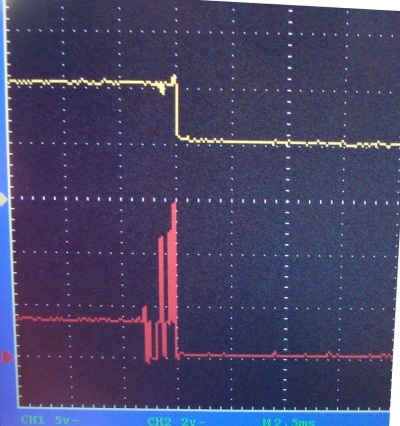Hello, I have a problem in step-up circuit based on TPS61087.
The situation is the following :
The step-up is powered from a Li-Ion battery at 3.6 Volt (up to 4.2V if fully charged) and the output is set at 12V.
When I put a load (heavy load) on the output, the circuit stops oscillating, and the battery voltage drops to very low value ; that's OK, I understand there is an overload and it's normal that my battery goes undervoltage, but... if I remove the load, the circuit still remains in the same condition and same does the battery. It looks like the output mosfet of TPS61087 is shorted and the battery sees the inductor as static load to GND.
I tested the same situation, with identical results, on the demo board purchased from TI and the behaviour is the same, so I don' attach my schematic that's directly derived from the app-note.
Note that if I connect the whole circuit (battery included) to a Li-Ion battery charger, even with limited charge current of 100mA, the step-up restarts when I remove the load.
Any suggestion will be highly appreciated, thanks !

